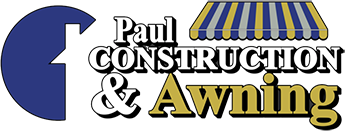As temperatures dip across eastern Pennsylvania, outdoor projects might not be top of mind. Yet winter is one of the best times to start planning upgrades that make your patio or deck more comfortable and energy-smart once spring returns. If you’ve been considering retractable awnings or motorized screens, getting a head start now gives you design clarity, better scheduling, and a smoother installation when the weather breaks.
Below, you’ll find a practical guide to winter planning: what to decide, how to coordinate approvals, and where awnings and screens fit into larger outdoor living plans.
1) Beat the spring rush and secure ideal timelines
Demand for shade systems accelerates in March and April. By starting design work in winter, you can schedule site visits, finalize selections, and place orders before installers’ calendars fill up. Begin by scanning retractable awning options to note fabric, projection, and control preferences.
2) Use off-season flexibility to refine the design
Winter offers time to optimize orientation, controls, and integration with structure. If privacy or wind control is also a goal, explore retractable screens with mesh openness that balances airflow, visibility, and insect protection.
3) Plan for energy comfort next summer
A well-placed awning reduces solar heat gain on west or south exposures, lowering afternoon cooling loads. For hardscape updates, see decks and patios to coordinate shade with cooking, dining, and lounge zones.
4) Coordinate HOA and permit approvals without delays
Use winter to assemble drawings and specs for township or HOA approvals. If a solid cover is part of the plan, review roof structures so attachment and drainage details are addressed before spring.
5) Align shade with a phased outdoor living plan
Plan brackets, conduits, and clearances early to support future screens, kitchens, or deck extensions. A phased approach keeps the look cohesive and may reduce total cost.
6) Compare fabrics, hardware finishes, and controls
Evaluate fabric durability and UV ratings, plus hardware finishes that match your home. For breezy sites, pairing an awning with side or front screens can curb crosswinds without closing the view.
7) Budget realistically and lock in materials
Winter start times help you price options, set priorities, and reserve materials before peak demand affects lead times.
8) Prepare your site for a smooth install
Confirm a dedicated electrical circuit for motorized units; choose a mounting location free of obstructions; verify head clearances; and discuss snow-shedding or drainage if a roof structure is in scope.
9) Envision comfort in every season
Retractable systems deliver control: retract to enjoy the sun on bright March days; extend for deep shade in August; add a windward screen for more comfortable shoulder-season dinners.
10) Take the next step with a local consultation
An on-site consultation confirms measurements, attachment points, and model fit. If you’re considering a deck refresh or permanent cover, discuss those in the same visit for a coordinated plan.
Schedule your winter design consult to be ready for the first warm weekend.

